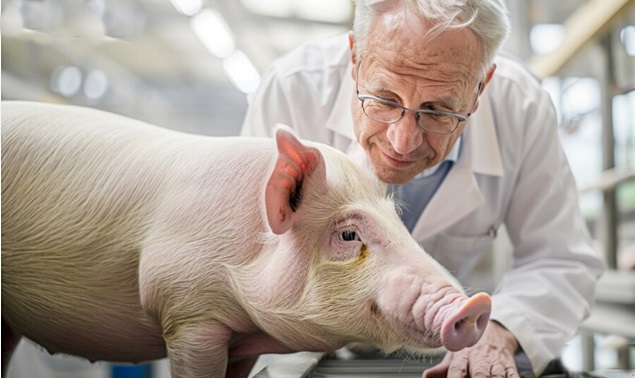
Swine Industry Must Prepare for Potential Emergence of H5N1 Avian Influenza in Domestic Pig Populations
The swine industry needs to be prepared for the potential appearance of highly pathogenic avian influenza (HPAI) H5N1 in domestic pig populations.
Although H5N1 is primarily known for its severe impact on birds, there is growing evidence that the virus can also infect other species—including pigs.
Cases of H5N1 Infection in Pigs
A notable example is the detection of H5N1 in a pig on a non-commercial farm in Oregon, USA. The mixed-species homestead, which housed both birds and animals including pigs, was the first known case of H5N1 infection in swine in the United States.
Moreover, research has confirmed that pigs can become infected with the H5N1 virus, raising concerns about the potential for adaptation and transmission to humans.
Pigs share key biochemical similarities with humans, and influenza viruses that adapt to pigs have historically shown increased transmissibility to humans, as was the case during the 2009 swine flu pandemic.
Biosecurity and Preventive Measures
To prevent the introduction and spread of H5N1 on pig farms, strict biosecurity protocols are essential.
A best practice example is the use of Stalosan F, a product proven to be effective against viruses such as HPAI H5N1 and African swine fever (ASF). Incorporating Stalosan F into routine hygiene protocols can help support sustainable livestock production.
Additional protective measures—such as installing netting to cover pig barns and prevent contact with migratory birds—have already been implemented in certain regions, such as Taiwan, to safeguard animals from H5N1 infection.
Importance of Industry Preparedness
Given H5N1’s ability to infect pigs and its potential to adapt and spread to humans, the swine industry must remain vigilant and prepared.
This includes implementing rigorous biosecurity measures, closely monitoring animal health, and maintaining active collaboration with veterinary and public health authorities to prevent potential outbreaks and ensure the safety of both livestock and humans.
Conclusion
While H5N1 is primarily recognized as a bird disease, its proven ability to infect pigs presents a real and emerging threat. The swine industry must take proactive steps to prevent and control potential infections—thus protecting both animal health and public health.




